|

"Happiness is like a butterfly which, when pursued, is always beyond our grasp, but, if you will sit down quietly, may alight upon you. "
 ~Nathaniel Hawthorne~ ~Nathaniel Hawthorne~

  
The Story of Cupid and Psyche 
Psyche, in Greek mythology, is the personification of the soul. In ancient Greek art, she was often depicted as a bird, a human with bird features, or a butterfly. In Greek, psyche means both "soul" and "butterfly."
Once upon a time there lived a maiden so beautiful that she was thought to be lovelier than even Venus, Goddess of Love. Venus, out of jealousy, commanded that her son, Cupid, ensure that no man would ever love her. Cupid went to Psyche, but accidently stuck himself with the tip of one of his arrows, and fell in love with her. He followed his mother's orders, making it so that no man would look upon her with love, and then he left.

Her family, surprised to find that their daughter was no longer sought by any suitor when before men had travelled some distance to court her, consulted the oracle of Apollo. The Oracle said that the daughter had angered the Gods in some way, and must be sacrificed to a monster to appease them. In sorrow, they took their daughter to the top of a nearby mountain and left her there, to await her fate.
Soon Zephyr, the God of the winds, came along and carried her along to a beautiful palace. A voice addressed her, though she saw no one, and it instructed her to enjoy the house and grounds around her. At night, when she retired to bed, she was joined in her bed by a lover, who said he was her husband but that she must never look upon him. He was gentle, but he was gone by morning.
For some time Psyche lived like this, though she often requested to see her husband's face. He would cover her in a gentle blanket and refuse to let her see. Finally, one night Psyche kept an oil lamp nearby, and when she knew her husband to be asleep she lit the lamp. Lying in her bed was the God Cupid, and what she had taken as a soft blanket was his wings. In her shock, she spilled a drop of hot oil and it dropped onto his shoulder.

Cupid awoke, and was angry with Psyche for breaking his command to not look upon him. He fled, and abandoned her. She chased after him, but as she could not fly she was soon left behind.
Unable to find her husband again, Psyche went to Venus, his mother, and begged her for help. Venus, who was still angry at the mortal, refused to help unless Psyche agreed to perform labours to show her devotion. Psyche agreed and was set about a number of tasks.
She was asked to sort out a storehouse full of grains by their type. Despairing, she asked for aide, and an army of ants came to help her, sorting the grains out. She was next directed to gather a handful of wool from some wild and dangerous sheep. Again, she asked for aide, and the briars by the riverside told her to wait, and after the sheep had drunk, she could gather the wool from their briars that they had pulled out. Venus was not happy to find that the girl had performed her tasks so well. For a final task, she gave Pysche a box, and told her to go to see Proserpine, wife of Hades, God of the underworld, and ask for a little of her beauty.

Pyshce travelled to the underworld and met the Queen of the dead, who gave her a box, commanding her not to open it. Psyche travelled out of hell again, but on her way, felt that she had worked so hard for so long that she deserved some reward. She thought to open the box and take a little of the beauty out for her own use. However, when she opened the box she found instead that what lay inside was a deathly sleep, and she collapsed on the ground.
By this time Cupid had recovered from his wound, and was sorry he had left Pysche in such a manner. He sought out to find her, and discovered her laying as if dead. He went to her, brushed away the sleep from her body, and embraced her again.
While Psyche brought the box to Venus as requested, Cupid went to the Gods and pleaded for their help. After hearing his tale, the Gods agreed to make Psyche one of their own. She was given a cup of ambrosia to drink, to make her an immortal, and butterfly wings so that she might fly alongside her husband.
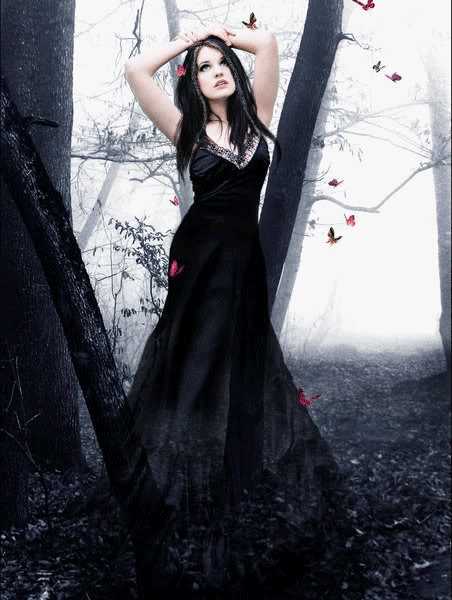
The Butterfly Effect
Weather prediction is an extremely difficult problem. Meteorologists can predict the weather for short periods of time, a couple days at most, but beyond that predictions are generally poor.
Edward Lorenz was a mathematician and meteorologist at the Massachusetts Institute of Technology who loved the study of weather. With the advent of computers, Lorenz saw the chance to combine mathematics and meteorology. He set out to construct a mathematical model of the weather, namely a set of differential equations that represented changes in temperature, pressure, wind velocity, etc. In the end, Lorenz stripped the weather down to a crude model containing a set of 12 differential equations.
On a particular day in the winter of 1961, Lorenz wanted to re-examine a sequence of data coming from his model. Instead of restarting the entire run, he decided to save time and restart the run from somewhere in the middle. Using data printouts, he entered the conditions at some point near the middle of the previous run, and re-started the model calculation. What he found was very unusual and unexpected. The data from the second run should have exactly matched the data from the first run. While they matched at first, the runs eventually began to diverge dramatically — the second run losing all resemblance to the first within a few "model" months.
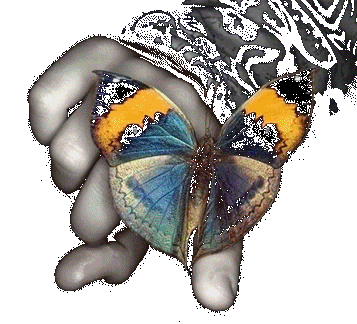
At first Lorenz thought that a vacuum tube had gone bad in his computer, a Royal McBee — an extremely slow and crude machine by today's standards. After discovering that there was no malfunction, Lorenz finally found the source of the problem. To save space, his printouts only showed three digits while the data in the computer's memory contained six digits. Lorenz had entered the rounded-off data from the printouts assuming that the difference was inconsequential. For example, even today temperature is not routinely measured within one part in a thousand.
This led Lorenz to realize that long-term weather forecasting was doomed. His simple model exhibits the phenomenon known as "sensitive dependence on initial conditions." This is sometimes referred to as the butterfly effect, e.g. a butterfly flapping its wings in South America can affect the weather in Central Park. The question then arises — why does a set of completely deterministic equations exhibit this behavior? After all, scientists are often taught that small initial perturbations lead to small changes in behavior. This was clearly not the case in Lorenz's model of the weather. The answer lies in the nature of the equations; they were nonlinear equations. While they are difficult to solve, nonlinear systems are central to chaos theory and often exhibit fantastically complex and chaotic behavior.
source: http://www.stsci.edu/~lbradley/seminar/butterfly.html
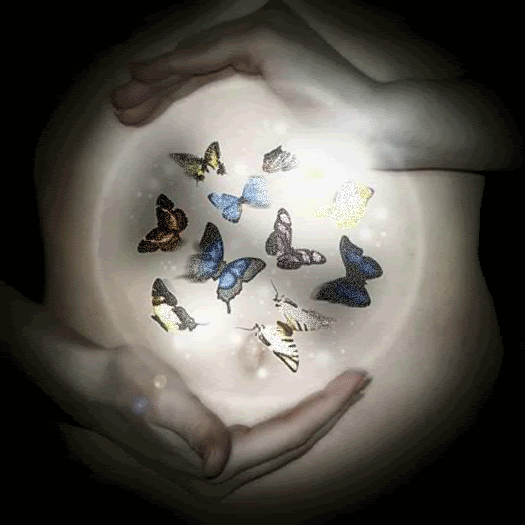
Butterfly Poaching
The Issue
According to the U.S. Fish and Wildlife Service, there is a growing trade in protected butterflies collected by poachers in U.S. National Parks. Two high-profile cases, one involving three men in San Francisco in 1995 and another with an Italian collector in July 1997, have brought attention to the issue of butterfly poaching and threats to rare and endangered butterfly species in the United States. However, there is considerable controversy surrounding the laws used to prosecute butterfly poachers, especially the Lacey Act, which critics contend is overly broad and ambiguous. Nevertheless, concern over potential species loss compelled park officials and law enforcement personnel to attempt to stem the most flagrant abuses. Legitimate collecting and trading of butterflies appears to pose no threat to species, but when criminals target species that live in small numbers in sparse and fragmented habitats, extinction becomes a possibility.

Description
It is rare that events in the relatively arcane world of butterfly collecting merit national media attention. However, trade in rare species of butterflies is becoming a lucrative business. Egregious violations of state and federal regulations by poachers enraged environmentalists and led to well publicized prosecutions by the U.S. Attorney's office for trade and trafficking in endangered and protected butterfly species.
While habitat loss remains the most significant threat to butterflies in the United States, there is growing evidence that some of the most endangered species are being relentlessly pursued by poachers. Often posing as amateur enthusiasts, poachers prowl through national parks and nature preserves, capturing live butterflies or collecting butterfly eggs, which can then be nurtured in a controlled environment to maximize the specimen's value. It is critical to poachers that the butterflies are captured unharmed, which explains their preference for raising the butterflies themselves from captured eggs. Since butterflies are captured and traded because of their unique beauty and color patters, any damage or irregularities (particularly in the wings) can reduce a specimen's trading price dramatically. In addition, it often necessary to uproot native vegetation on which the butterflies feed, exacerbating the environmental degradation caused by the poachers.
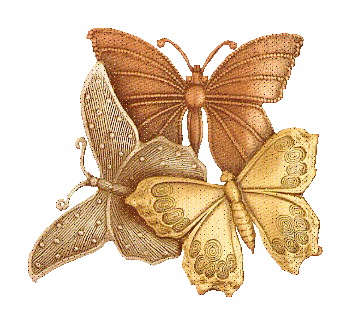
Nearly 20 species of butterflies in the United States are protected by the Endangered Species Act (four other species are covered by the Convention on International Trade of Endangered Species (CITIES), but none are native to North America). With so many endangered and threatened species, the U.S. has become a target for wildlife entrepreneurs. U.S. Fish and Wildlife Service officials estimate that some rare butterflies taken from U.S. parks, if preserved in good condition, sell for up to $500 to avid collectors.
Not only are the potential profits high, but poachers have little to fear from law enforcement officials. Claiming ignorance of the law usually proves sufficient to avoid a fine when caught by park officials. The popular view that butterflies, or even insects in general, do not count as "wildlife," and thus are not protected in national parks, helps the poachers avoid prosecution. While many people rally to protect owls, seals, or dolphins, insects rarely attract the attention of environmentalists, let alone the public. In large measure, the neglect of insect species can be explained by their seeming infinite numbers. It is nearly inconceivable that a few collectors could threaten most species, but several butterfly species are vulnerable because they live in small patches of fragmented habitat.

Two large-scale poaching operations did finally attract the attention of Fish and Wildlife Service officials and were prosecuted. First, three men, Richard Skalski, Thomas Kral, and Marc Grinnell were convicted in 1995 of illegally capturing thousands of butterflies from U.S. national parks and wildlife refuges. Then, in July, 1997, Adriano Teobaldelli was arrested on similar charges in California's Sequoia National Park; Teobaldelli, an Italian, evidently traveled to the United States expressly to poach rare butterflies.
The investigation of Skalski, Kral, and Grinnell began in 1991 after the Fish and Wildlife Service received a tip that Skalski had collected numerous specimens of two endangered species, Papilio indra panamintensis and Papilio indra kaibabensis, from Death Valley National Monument and Grand Canyon National Park. Skalski, an exterminator for Stanford University, had been allowed to use some of the university's science facilities for raising butterflies, and several members of the faculty were aware of his keen interest in rare species. Skalski's frequent boasting about his collection prompted a university official to contact the Fish and Wildlife Service. After posing as collectors and purchasing an endangered specimen from Skalski, law enforcement officials were able to obtain a search warrant for Skalski's residence.

Describing the interior of Skalski's home as something from Silence of the Lambs, agents found hundreds of chrysalises hanging over Skalski's bed, where he could best observe the precise moment to transfer them to a dark room before their metamorphosis. Inside the refrigerator were another hundred butterflies, kept cool to preserve their delicate wings intact. All in all, Skalski possessed one of the finest collections in the world. To give just one example, while the National Museum of Natural History, the American Museum of Natural History, and the California Academy of Sciences together do not possess a single specimen of the rare Panamint swallowtail, Skalski had nine.
Letters seized in Skalski's home implicated Kral and Grinnell. In the letters, the three men were openly boastful of their poaching activities, relating stories about deceiving park officials on the many occasions when they were questioned; some were even signed "Yours in poaching." The letters also documented trips around the country to parks with express intent to poach certain endangered species. Kral had even poached a number of butterflies from a rare species that he discovered in 1992, Neonympha mitchellii francisci or the St. Francis satyr.
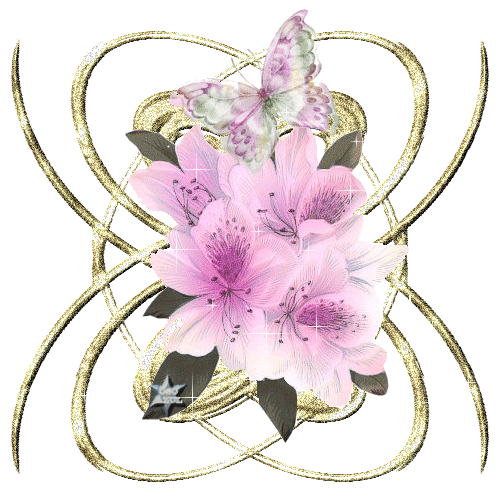
From the evidence seized in the search, the Justice Department decided to pursue a felony prosecution against Skalski, Kral, and Grinnell. The three men were charged with commercial trade in wildlife protected by the Endangered Species Act and with conspiracy to poach butterflies from national parks, national wildlife refuges, and national forests. The three men eventually plead guilty to lesser charges and received fines and community service. As a result of the investigation 2,200 specimens with an estimated value of approximately $300,000, were recovered and included 14 of the butterfly species protected under the Endangered Species Act.
The case of Adriano Teobaldelli, while less egregious than Skalski, Kral, and Grinnell's operation, shows an international dimension to the problem of butterfly poaching. Teobaldelli was apprehended in Sequoia National Park with 51 rare butterflies. A later search of his motel room uncovered over 200 more, which Teobaldelli admitted poaching from other national parks in the United States. Teobaldelli, an Italian, had traveled to the U.S. solely to capture rare species. Prosecutors chose not to pursue the same type of time-consuming case that they had against Skalski and his compatriots, but Teobaldelli was fined $500 for his activities.
  
These two cases highlight the growing threat to rare butterfly species. However, in the wake of the Skalski case, a considerable controversy erupted over the laws that protect butterflies from poachers. The most controversial of all is the Lacey Act, which bans interstate and international transport of endangered or protected species that have been illegally captured. It also makes it a crime to import into the United States species that were captured illegally in another country.
Critics contend the law is far too broad, leading to arbitrary enforcement. As one critic sarcastically observed, "[Enforcing the] Lacey Act would require the jailing of everyone who carried the carcass of a splattered grasshopper or fly out of a park on his windshield or radiator!" The concern is that enforcement of the Lacey Act will have a chilling effect on legitimate butterfly collecting. Many museums, collectors, and researchers are at risk of prosecution if some of their specimens were illegally collected.
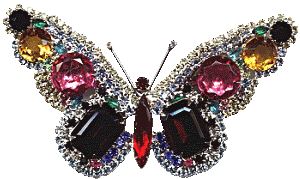
The importance of butterflies in many ecosystems, however, would seem to support measures designed to restrict their capture and trade. Butterflies make their primary contribution to the environment through pollination. Many species, like the Monarch butterfly, are closely associated with a companion plant species, and their symbiotic relationship determines the welfare of both species. Yet, most species of butterflies are so numerous that collecting and trading, even on a large scale, pose no serious risks. While there is no accurate data on the scope of global trade in butterflies, one can predict with confidence that it does not threaten the vast majority of species. Only those types of butterflies whose habitat is in decline (through development, pollution, etc.) are in any danger of extinction. Butterflies whose habitat is threatened in this manner may well become extinct even without unauthorized collecting and trading, but poaching will certainly accelerate their demise.
The resources of the Fish and Wildlife Service to pursue butterfly poachers are so limited that only the most flagrant violators, like Skalski, Kral, and Grinnell, will be charged. In addition, legitimate collectors can often apply for permits to capture butterflies on public property, not only for personal collections but for trade. Many state regulations also provide exceptions in protection laws, even for some endangered species, for genuine research.
The significance of the butterfly poaching case within the broad issue of trade and the environment stems from its application of traditional wildlife protection laws to insects. Species loss among insects is usually caused by habitat loss as a result of development or deforestation. However, as in the case of rare butterflies, insect species can be threatened in other ways, such as poaching. Prosecutions in the two poaching cases described above reflect the efforts of conservationists to extend wildlife protection laws to all endangered species-even bugs.
source: http://www1.american.edu/TED/poachbut.htm
 backgroundand graphics by: backgroundand graphics by:

  

  

|